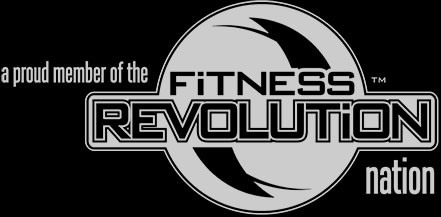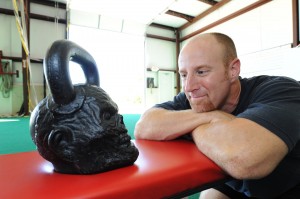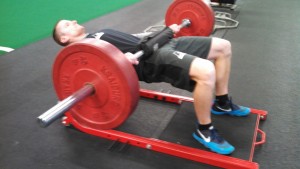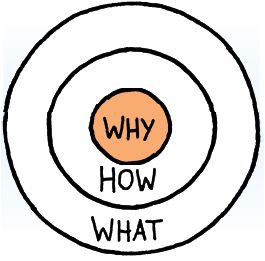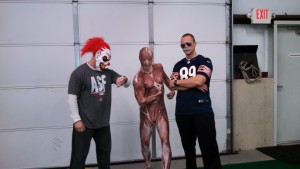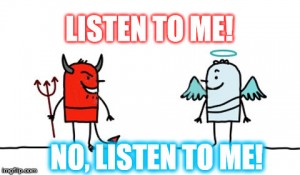The following is a summary of what supplements the ASF coaches use on a regular basis. It does not mean this is the right program for you; consider it more of an educational piece than a recommendation.
Neil Platt:
What supplements should I take? Which ones work and which ones don’t? Should I take them at all? Isn’t creatine illegal? These are typical questions that are asked by our athletes and adults on a daily basis and I’ve decided to do a brief write up about the supplements I take and why I take them. This is not a comprehensive list and it is in no way a recommendation, just an overview.
Probiotic: I generally start my morning by eating breakfast and taking my probiotic. My probiotic is from a company called Align. The benefits of probiotic use are lengthy, and still being researched. It is a small capsule that is filled with tons of live, healthy bacteria that your digestive tract needs. These bacteria aid in the digestive process, as well as a number of other functions. Probiotic use has been shown to help alleviate certain medical conditions, such as irritable bowl syndrome. I recently read a study that showed a link between probiotic supplementation and a reduction in depression like symptoms. I started using it a few months ago and I’ve noticed a huge difference in how my digestive tract is operating.
probiotic. My probiotic is from a company called Align. The benefits of probiotic use are lengthy, and still being researched. It is a small capsule that is filled with tons of live, healthy bacteria that your digestive tract needs. These bacteria aid in the digestive process, as well as a number of other functions. Probiotic use has been shown to help alleviate certain medical conditions, such as irritable bowl syndrome. I recently read a study that showed a link between probiotic supplementation and a reduction in depression like symptoms. I started using it a few months ago and I’ve noticed a huge difference in how my digestive tract is operating.
Multi-Vitamin: Multi-vitamin use seems to be a hot topic. Some people say that eating a well balanced diet that includes plenty of veggies and fruits is enough to get in all of your vitamins and minerals. However, the research shows you would have to eat a ton of different types of veggies, lentils, and grains to get in all of your vitamins and minerals. Truthfully, it is nearly impossible for all of us to eat a well-balanced diet so I use a multi-vitamin to plug any nutrient holes I have in my diet. I’m not a big fan of veggies so I have plenty. No need to get too fancy with your multi-vitamin. I use Centrum for men. You can find it in any grocery store for about fifteen bucks.
Glutamine: Glutamine is a common amino acid found within the body. Amino acids are the building blocks of proteins. I take this product during and after my workouts as glutamine supplementation has been shown to reduce muscle breakdown (catabolism) and improve muscle building (anabolism). This product also contains sufficient amounts of the amino acids Leucine, Isoleucine, and Valine, all of which are absolutely ess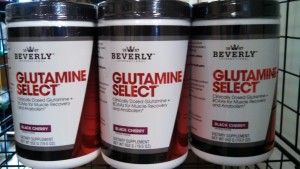 ential to building muscle. Glutamine supplementation has also been shown to have positive effects on your immune system, and your digestive system. The direct mechanisms by which this works are not yet known but having glutamine in your system during times of stress (working out, illness…) can help to alleviate many common issues. I get Glutamine Select from Beverly International.
ential to building muscle. Glutamine supplementation has also been shown to have positive effects on your immune system, and your digestive system. The direct mechanisms by which this works are not yet known but having glutamine in your system during times of stress (working out, illness…) can help to alleviate many common issues. I get Glutamine Select from Beverly International.
Creatine: Yes, I take creatine and I’m still alive to talk about it. For whatever reason, creatine has gotten a horrible reputation. Your body uses creatine every single day for every single movement you make. Your muscles are able to work due to the energy that is supplied by adenosine triphosphate (ATP). ATP is nothing more than an adenosine molecule combined with three phosphate molecules. When a phosphate group is split off, energy is produced and used for muscle contraction. In order to restore ATP to its normal state, it must gain another phosphate. Where does this phosphate come from? Creatine!! (well creatine phosphate, but for the sake of conversation we‘ll just say creatine). That was a very simple (quite possibly 100+ steps left out) of muscle activation. Creatine restores your muscles ability to contract. Taking creatine can possibly increase the amount of stored creatine in your muscles. More creatine = higher work capacity. If I can work harder AND longer, I may be able to increase my muscle mass and strength. Creatine is not, I repeat, IS NOT illegal and has no (based on legitimate studies) negative side effects. I usually take one serving prior to my workout. Creatine Select is a Beverly International Product.
Protein: I’m currently taking the Beverly International Product called Ultimate Muscle Protein, or UMP. I usually drink one after my workout and another as a snack during the day. UMP has a combination of fast digesting protein (whey) and slow digesting protein (casein). The whey gets into your system faster to help repair and rebuild muscle tissue following exercise and the casein provides a slower release to help you feel full longer and sustain the rebuilding the process. Following my workout I will add some form of fast acting carbohydrate to my shake, such as chocolate syrup. I’ll even eat gummy bears or some form of sugary candy. What?? You eat sugar after you exercise? Yes I do. Following exercise your body is starving for carbohydrates to replenish what it has just burned. The best time to get in your sugary fix is immediately following your workout. Every now and then I’ll drink a Gatorade Recover shake. These shakes are full of carbohydrates and have twenty grams of protein, plus they taste amazing.
So there it is. Those are the supplements that I am currently taking and a brief overview of why I take them. As I mentioned previously, this list does not include every supplement out there and it is not a recommendation to take any of them, simply an overview of my routine. Feel free to ask me any questions regarding these or any other supplements you are thinking about/currently taking and I’ll try to help you out the best I can.
Brian Macdonald:
As a little introduction for this series of blogs, the intent is to go over my current supplement regimen, what they are, why I take them, and who may benefit from their use. My hope is for this to help any of you who may be considering sports nutrition supplementation, and that it may help guide you to making the right choices.
Pre-workout supplementation: I would like to start out by saying I am a big supporter of the JYM brand and Jim Stoppani. I am all in with what Jim stands for, which is a line of supplements that are science-based and truthful. When I say truthful, I mean each and every ingredient is clearly listed as well as their exact amount. There are no “proprietary blends”, which is another blog topic in itself, where the exact ingredient and amount are nowhere to be found. I don’t know about you, but I like to know everything I am putting in my body clearly listed so that if there is something I am unsure about, I can research it. For anyone who is interested in supplementation and unsure about what brand to go with, at least visit Jim Stoppani’s website for information on supplementation (He his a Ph.D in Exercise physiology with a minor in biochemistry from the University of Connecticut, so he is very knowledgeable of everything he creates and every ingredient he uses.)
Moving on to my pre-workout supplement:
Pre-Jym by Jim Stoppani
Why?
It gives me a great boost in energy and focus along with key ingredients involved in fighting fatigue, increasing muscular strength and power, as well as muscular gains. It’s not “just a killer pump” I look for, but a logical and science backed combination of ingredients that will help enhance my training.
Ingredients:
– Branched Chain Amino Acids (6 Grams). They are leucine, isoleucine, and valine. BCAA are used directly by our muscles as an energy source; Leucine is considered most important due to it’s role in stimulating protein synthesis; Valine aides in fighting fatigue.
– Citrulline Malate. Citrulline is converted to Arginine, an amino acid which is then converted into nitric oxide. Nitric oxide is a naturally occurring gas in the body which is said to aide in muscular growth and recovery, while also increasing blood flow (vasodilation) which increases the delivery of nutrients to our muscles.
– Creatine HCL (2 grams). As Neil mentioned, creatine is one of, if not the most, researched supplement on the market. It is substantially backed by science that creatine helps support
gains in muscular strength and power. Creatine Hydrochloride is simply an easier absorbed form and helps to prevent stomach issues which may occur through creatine monohydrate supplementation.
– Beta-Alanine (2 Grams). Beta-alanine helps to form carnosine. Research suggests increased carnosine levels increases strength and power, while also boosting endurance and recovery.
– Betaine (1.5 Grams). Clinical studies have suggested Betaine helps improve muscular
strength and power production.
In closing, the only way to know if a supplement is right for you is to try it. Everyone reacts differently to supplements. Something which may work great for me, may not do anything for you. One thing you certainly need to have is patience. We are in a society of “instant gratification”. Results simply will not happen overnight and time needs to be given to see how your body reacts to the supplement. Lastly, understand that these blogs are information about supplements, meaning supplementing your diet. One thing that drives me absolutely insane are people who complain about a supplement that isn’t working at all, while I see them stuffing their face with fast food for two out of three meals per day. These supplements will not replace your diet or make up for a poor diet, but instead will work best in conjunction with a reasonably healthy approach to nutrition.
Part two will delve into what other supplements I use post-workout and for general health. There will also be a section outlining the supplement usage, past and current, of Tony Poggiali.
Thanks for reading!
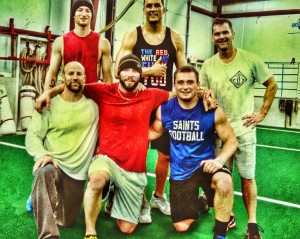 component of a business. Most businesses have Mission Statements and some even have Vision Statements, but what about a Culture Statement? While these are more of a brain dump than a true statement, it was too hard to narrow it down…so, here goes nothin!
component of a business. Most businesses have Mission Statements and some even have Vision Statements, but what about a Culture Statement? While these are more of a brain dump than a true statement, it was too hard to narrow it down…so, here goes nothin! to choosing activity to loving activity.
to choosing activity to loving activity.
